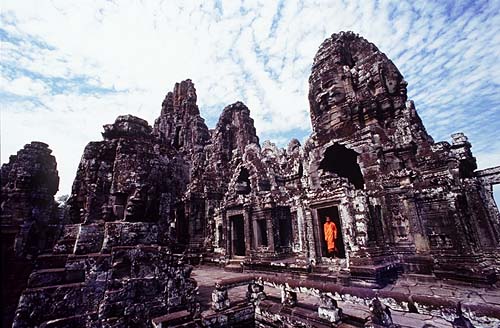The temple of Artemis at Ephesus
The Mausoleum at Halicarnassus
The Hanging Gardens of Babylon
The Porcelain Tower of Nanking
Angkor Wat, in its beauty and state of preservation, is unrivaled. Its mightiness and magnificence bespeak a pomp and a luxury surpassing that of a Pharaoh or a Shah Jahan, an impressiveness greater than that of the Pyramids, an artistic distinctiveness as fine as that of the Taj Mahal.
Angkor Wat is located about six kilometers (four miles) north of Siem Reap, south of Angkor Thom. Entry and exit to Angkor Wat can only be access from its west gate.
Angkor Wat was built in the first half of the 12th century (113-5BC). Estimated construction time of the temple is 30 years by King Suryavarman II, dedicated to Vishnu (Hindu), replica of Angkor Thom style of art.
Angkor Wat is just one of a hundred or so monuments that remain scattered over an area of about 300 square kilometres in northern Cambodia - the religious remains of a series of cities, built by a succession of kings from around the 7th to the 13th centuries.
All civic and domestic buildings were built in timber and have long since disappeared, so not much is known about the lives of the civilians - though some 1,200 inscriptions found throughout the region and the remains of a vast irrigation system indicate the scale and complexity of the civilisation.
Water draining from the Kulen hills across the Angkor plain to the Tonle Sap lake provided the potential for tremendous rice production which in turn sustained an extraordinary culture.
